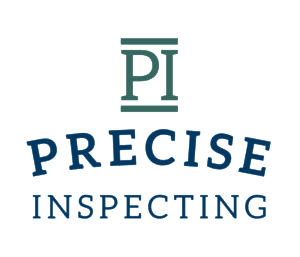Important Inspections for Your Rental Property
Landlording entails a ton of responsibilities, one of them being periodic property inspections.
Regular inspections help in three main ways. An inspection can help in the identification of maintenance issues that should be fixed before they morph into serious problems.
An inspection also ensures that tenants are following the terms of the lease agreement. For example, not keeping pets or subletting the property in contravention of the lease agreement. Additionally, routine inspections can determine if the property is habitable, which is a crucial responsibility for landlords.
Here are some of the essential inspections that you should get for a rental property.
Types of Rental Inspections
If you are self-managing your rental property, then be prepared to perform four inspection types. That is when the tenant is first moving in, when they move out, when seasons change and a drive-by inspection.
If you have hired a property manager, make sure they have an inspection plan outlined in their management contract.
When conducting inspections, it pays to keep meticulous records. The records may include dated notes, videos, and quality pictures. By doing so, you’ll be able to stay in the loop regarding your property’s condition, as well as have legal proof when necessary. For easy access, retrieval, and reference, make sure to store the records electronically.
With that in mind, let’s now take a look at some of the rental inspection types.
Inspection Type #1: Move-In Inspection
This is the first inspection in a lease term. It’s performed by the two parties to the lease or rental agreement – both the landlord and the tenant. A move-in inspection is essential as it helps document the property’s initial condition and help serve as a reference for any damage done when the lease ends.
When performing this inspection, make sure to be thorough. Document as many things as possible, including walls, floors, faucets, appliances, windows, window treatments, and light fixtures.
You also want to record and take photos of things like thumbtack holes, dents, and scuffs.
Once both of you are done, make sure to sign the inspection report. The report will serve as a dated reference to the property’s initial condition and help identify any damage the tenant may have caused during their tenancy.
Inspection Type #2: Move-Out Inspection
This is now when the move-in inspection report becomes useful, as it acts as a reference. As part of your agreement, your tenants should understand they must return the property in the same condition they found it, unless normal wear and tear.
If there are any excessive damages caused by the tenant, you’ll have a right to make the appropriate deductions from their security deposit.
Examples of excessive property damage include:
- Missing or damaged door locks or handles
- A hole in the middle of a door
- A broken toilet seat
- A smashed bathroom mirror
These are excessive damages, and you can hold the tenant liable for paying for their repair.
Examples of normal wear and tear include:
- Loose door handles
- Dirty grout
- Fading of the hardwood or carpet due to sunlight exposure
- A couple of dings or scrapes in a wood floor
These occur as a result of normal property degradation, and therefore a tenant cannot be liable for repairing or replacing them.
Inspection Type #3: Seasonal Inspection
Different seasons present different maintenance challenges. During fall, for example, the following maintenance tasks may be necessary.
- Wrapping insulation around outdoor faucets and pipes in unheated garages.
- Inspecting exterior door hardware, fixing squeaky handles, and loose locks.
- Draining and winterizing exterior plumbing.
- Inspecting the roof for loose, missing, or damaged shingles or leaks.
- Aerating the lawn and raking leaves.
Summer, winter, and spring also have unique maintenance challenges as well. A professional home inspector is a great person to hire for this inspection, because they are knowledgeable & are able to assess the condition of the property accurately.
Inspection Type #4: Drive-By Inspections
As the name implies, this is an impromptu inspection that you can perform when you happen to be driving by the property. Unlike others, this inspection type doesn’t require coordinating schedules with your tenants.
The goal of drive-by inspections is to check whether tenants violate any terms of the lease or rental agreement, for instance, by keeping unauthorized guests or pets. It’s particularly useful as you’ll most likely catch them unawares.
Notifying Your Tenants
Tenants have a right to the quiet and peaceful enjoyment of their properties. Barging in on them unannounced can qualify as harassment. All forms of harassment are illegal and can lead to serious legal ramifications.
So, whenever looking to access the rental property, always make sure to inform the tenant. Different states have different laws in regards to just how much notice you should give. But generally speaking, that’s usually 24 hours before the intended visit.
There you have it. Four inspection types that you should be conducting on your rental property. If you find doing them rather daunting, then consider hiring an experienced home inspector to ensure that your property is in good condition.




